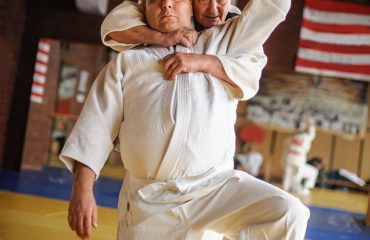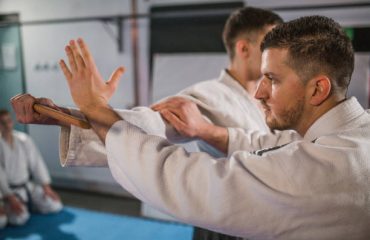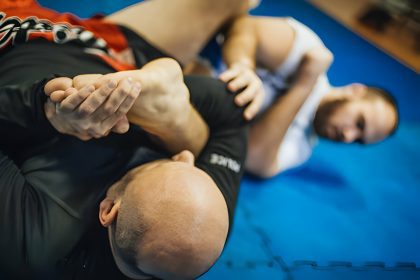
The Evolving Landscape of BJJ Rules
In the dynamic and ever-evolving sport of Brazilian Jiu-Jitsu (BJJ), understanding the rules, especially regarding leg lock positions, is crucial for competitors and enthusiasts alike. At NOCO Jiu-Jitsu and Self-Defense, we believe in not only teaching the techniques but also the rules that govern their use in competitions. This article explores the complex world of BJJ rules, focusing on the legality and application of leg lock positions in various BJJ competitions.
The Basics of Leg Locks in BJJ
Leg locks are submission techniques that target an opponent’s lower limbs, including the knees, ankles, and hips. They are powerful tools in a grappler’s arsenal but come with a significant responsibility due to their potential to cause injury. These techniques, when executed correctly, can be decisive in competitions, providing an edge over opponents. However, they require a deep understanding of the mechanics and limitations of the human body to be applied effectively and safely.
- Understanding Leg Locks: An overview of different leg lock positions. This includes the straight ankle lock, which targets the ankle joint, the kneebar, which is similar to an armbar but for the leg, and more complex positions like the heel hook, which targets multiple joints in the leg. Each of these positions requires specific grips, body alignments, and pressure points to be effective.
- Safety First: The importance of applying leg locks with care. This involves recognizing the limits of your opponent’s flexibility and joint strength, applying pressure gradually, and being attentive to their tapping out. It’s crucial to practice these techniques under the supervision of experienced instructors who can guide you in understanding the fine line between a successful submission and causing injury. At NOCO Jiu-Jitsu and Self-Defense, we prioritize the safety of our students while encouraging them to explore the full range of BJJ techniques, including the effective use of leg locks.
BJJ Competitions: A Diverse Rule Set
BJJ tournaments vary significantly in their rule sets, with some allowing a wide range of leg locks and others being more restrictive. Understanding these differences is key to both competing and training effectively. This variation in rules not only affects the strategies competitors must employ but also influences the focus and style of different BJJ schools and training programs.
- IBJJF Rules: Exploring the restrictions imposed by the International Brazilian Jiu-Jitsu Federation. The IBJJF, known for its conservative approach, permits certain leg locks like straight ankle locks at all belt levels but restricts more complex techniques, such as heel hooks, to the black belt division in No-Gi competitions. This conservative approach aims to prioritize the safety of competitors, especially at lower belt levels where athletes are still developing their understanding and control of these potentially dangerous techniques.
- ADCC and No-Gi Competitions: How no-gi tournaments differ in their approach to leg locks. Unlike the IBJJF, ADCC (Abu Dhabi Combat Club) and other no-gi tournaments often have more liberal rules regarding leg locks. These competitions allow a wider array of leg submissions, including heel hooks and knee bars, even at lower belt levels. This openness encourages a more diverse range of techniques and strategies, making these tournaments particularly popular among practitioners who specialize in leg lock systems and ground-based grappling.
Leg Locks in Gi vs No-Gi BJJ
The distinction between Gi and No-Gi BJJ is significant when it comes to leg locks. The presence or absence of the Gi changes the dynamics of these submissions. In Gi BJJ, the fabric offers more grip options, which can both aid in defense and provide more control during the application of a leg lock. Conversely, No-Gi BJJ, with its lack of grips, often leads to a faster-paced and more dynamic grappling environment, where leg locks can become a pivotal part of a competitor’s strategy.
- Gi Competitions: Restrictions and allowed techniques. In Gi competitions, certain leg locks are often prohibited to ensure safety, given the increased control and leverage provided by the Gi. For example, heel hooks are typically not allowed in Gi competitions under most rule sets. Practitioners must focus on techniques like straight ankle locks or kneebars, which are generally considered safer and more controlled.
- No-Gi Dynamics: The expanded arsenal of leg locks in No-Gi. Without the Gi, practitioners often find it easier to slip into leg lock positions, making these techniques more viable and varied. Competitions like ADCC (Abu Dhabi Combat Club) allow a wider range of leg locks, including heel hooks and toe holds. This openness encourages a more diverse set of strategies and techniques, making No-Gi competitions particularly exciting for those interested in leg lock submissions.
The understanding of how leg locks vary between Gi and No-Gi settings is crucial for practitioners who wish to compete in both styles. At NOCO Jiu-Jitsu and Self-Defense, we ensure our students are well-versed in the rules and techniques specific to each style, providing a comprehensive BJJ education that covers all aspects of the sport.
Training for Leg Locks: NOCO Jiu-Jitsu and Self-Defense Approach
NOCO Jiu-Jitsu and Self-Defense leadership prioritizes holistic leg lock exposure for students – equally preparing execution offenses and counter-defense responses alike. We constructed comprehensive lesson plans unraveling submission mechanical nuances completely. The structures build deep working bits of knowledge of real-world applications plus highlight specialized prevention techniques simultaneously. Our well-rounded development programs equip students with insights to meet modern match demands wisely. Balanced offensive-defensive integration remains key for thriving in the evolving submission climate ahead.
- Technique and Drilling: Building a solid foundation in leg lock mechanics is the first step. Our classes focus on the detailed breakdown of each leg lock, including positioning, control points, and the application of pressure. We ensure that students understand the mechanics behind each move, from basic ankle locks to more complex techniques like heel hooks. Regular drilling sessions help in refining these techniques, emphasizing precision and control.
- Sparring with Leg Locks: Integrating leg locks into live training safely is crucial. Sparring sessions at NOCO are conducted under close supervision, allowing students to apply leg locks in a realistic yet controlled environment. This not only helps in understanding the practical application of these techniques but also teaches students how to react and defend against them. We encourage a progressive approach to sparring, starting from specific leg lock positions and gradually moving to more dynamic scenarios.
- Defensive Strategies: An often-overlooked aspect of leg lock training is defense. Our curriculum includes extensive training on how to effectively defend against leg locks. This includes recognizing early threats, escaping from compromised positions, and counter-techniques. Understanding defense enhances overall grappling skills and provides a more comprehensive approach to BJJ.
- Safety and Injury Prevention: At NOCO, the safety of our students is paramount. We educate our practitioners on the safe application of leg locks, highlighting the importance of tapping out early and respecting the tap. Our instructors are trained to spot potential injury risks and intervene when necessary. This focus on safety ensures a healthy training environment where students can learn and grow without fear of injury.
Incorporating these elements into our training regime, NOCO Jiu-Jitsu and Self-Defense ensures that our students not only excel in applying leg locks but also understand the critical aspects of safety, defense, and strategic application in BJJ. Our goal is to develop skilled practitioners who respect the art and their training partners, contributing positively to the BJJ community.
Advanced Leg Lock Positions: Exploring the Intricacies
For the advanced practitioner, understanding the nuances of more complex leg lock positions can be a game-changer in competition. These techniques require not only physical skill but also a deep tactical understanding of when and how to apply them effectively.
- Heel Hooks and Toe Holds: These advanced techniques are among the most potent in BJJ. Heel hooks involve rotating the foot to apply pressure to the knee, while the toe holds target the ankle and foot. Both require precise control and understanding of the mechanics to apply safely and effectively. At NOCO Jiu-Jitsu and Self-Defense, we teach these techniques with an emphasis on safety, ensuring our students understand the correct application to prevent injuries.
- Strategic Application: Knowing when and how to use advanced leg locks in matches is crucial. It involves reading the opponent’s movements, anticipating their defenses, and applying the lock at the right moment. We train our students to recognize the ideal scenarios for these submissions, whether it’s capitalizing on an opponent’s mistake or creating openings through strategic positioning.
Adding to this, mastering advanced leg locks also involves a comprehensive understanding of defense strategies. Knowing how to escape or counter these techniques is just as important as applying them. This dual knowledge ensures a well-rounded skill set, preparing our students for various scenarios they might encounter in competition. Furthermore, we encourage our students to practice these techniques in controlled sparring sessions, allowing them to experience the application in real-time, under the watchful eye of experienced instructors. This hands-on approach helps solidify their understanding and boosts their confidence in using these advanced techniques in competitive settings.
Leg Locks: A Controversial Topic in BJJ
Persisting debates continue weighing leg-based submission maneuver safety for mainstream integration legitimacy. Effectiveness arguments rationalize dangerous joint-manipulating finishes while the opposition cites heightened injury dangers undermining sporting spirit integrity. At the core, discussions attempt to reconcile high-performance submission virtues against ethical participation standards upholding collective well-being. The conversations mirror deeper societal struggles seeking balanced progress mindful of extreme tradeoffs. Thus the legality deliberations ongoing represent microcosms of universal wisdom pursuits striving for enlightened equilibriums daily.
- Safety Concerns: Addressing the risks associated with leg locks is paramount. The primary concern is the potential for joint damage, particularly to the knees and ankles. This risk is heightened due to the often subtle onset of injury, where damage can occur before the recipient fully realizes the danger. At NOCO Jiu-Jitsu and Self-Defense, we emphasize the importance of learning proper application and defense against leg locks, as well as recognizing the signs of a dangerous situation during sparring or competition.
- Sport Evolution: How leg locks are changing the landscape of BJJ is a topic of much discussion. Traditionally, many BJJ schools and competitions limited the use of certain leg locks, viewing them as either too dangerous or not in keeping with the art’s focus on control. However, as the sport evolves, there’s a growing acceptance and incorporation of these techniques, especially in no-gi grappling and submission-only formats. This shift reflects a broader trend towards a more inclusive and diverse technical repertoire in BJJ, where practitioners are encouraged to explore and master a wider range of techniques, including leg locks.
The ongoing debate about leg locks in BJJ reflects the sport’s dynamic nature and its continuous adaptation. While some purists advocate for traditional rules, others embrace the evolution of the sport, seeing it as a natural progression and expansion of BJJ’s technical arsenal. This debate is not just about the techniques themselves but also about the philosophy and direction of Brazilian Jiu-Jitsu as a martial art and sport. As BJJ continues to grow in popularity and evolve, the conversation about leg locks and their place in the sport is likely to continue, reflecting the vibrant and ever-changing nature of this martial art.
Understanding and Respecting the Rules
Understanding the rules regarding leg lock positions in BJJ competitions is essential for every practitioner. At NOCO Jiu-Jitsu and Self-Defense, we strive to equip our students with the knowledge and skills to navigate these rules effectively.
Interested in mastering leg lock positions and understanding their role in BJJ competitions? Join us at NOCO Jiu-Jitsu and Self-Defense. Our experienced instructors are ready to guide you through every aspect of BJJ, from fundamental techniques to competition strategies. Contact us today to begin your path to mastering BJJ with a comprehensive understanding of its rules and techniques.
Frequently Asked Questions:
- Are straight ankle locks permitted in IBJJF white belt divisions?
Yes, straight ankle locks are allowed even at white belt as they are considered a foundational control technique in the IBJJF rulesets.
- Can heel hooks be applied in any major BJJ gi competitions?
No, nearly all major gi competition organizations strictly prohibit heel hooks even at black belt to prioritize safety in controlled grip-based matches.
- What submission knowledge gaps do strikers face when transitioning to BJJ?
Coming from striking arts, new BJJ students often overlook the depth/variety of submission systems beyond arm/neck chokes requiring broad supplementary education.
- Why might a recreational hobbyist hesitate to train leg locks?
Some casual students hesitate to train leg locks over perceived injury risks though supervised practice with trusted partners actually enhances safety awareness and responsible skill.
- How should newcomers react if caught in an unfamiliar leg lock?
The safest reaction involves immediately tapping once caught in unfamiliar positions before attempting to escape given one’s inexperience in gauging submission dangers.
- Why are pain tolerance attitudes dangerous regarding leg locks?
Assuming leg locks are simply “pain compliance” techniques encourages ignoring tap signals heightening severe injury potential from joint/ligament failures.
- How should students pick safe leg lock training partners?
Opt for controlled, communicative partners focused on mutual safety over opponents attempting to “win” submissions at all costs risking beginners.
- Should BJJ students specialize in leg locks or master fundamentals first?
Mastering positions, escaping, guard retention and fundamental submissions should precede leg lock specialization minimizing gaping skill deficiencies.
- What should students do if leg lock training intensity escalates uncomfortably?
Openly communicating personal capability limits ensures healthy, sustainable training paces respecting individual growth rates appropriately.
- Why should BJJ leaders advocate ethical leg lock application?
Coaches carrying influential platforms shape community safety standards – upholding ethical leg lock protocols protects members against dangerous exclusionary mentalities creeping in.
